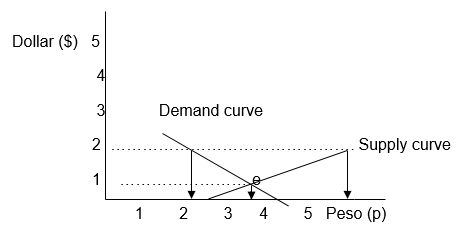Taiwan exchange rate regime and its reaction to China’s political and military threat in 1996
Taiwan operated a fixed (but adjustable) exchange rate regime before the fourth quarter of 1980, after which it switched to a floating exchange rate regime. Theoretically, a fixed exchange regime helps to cushion against time-inconsistency problems and prevents inflation bias through the application of the automatic rule that governs the conduct of monetary policies. The Taiwan central bank pegged the exchange rate, thus devaluing the Taiwan dollar.
As a result, the pegged rate, coupled with substantial trade surpluses, led to the rapid accumulation of foreign reserves. However, the central bank withdrew from managing the exchange rate in the first quarter of 1981, making the Taiwan exchange rate system become a managed floating exchange rate system. The floating exchange system fluctuates according to movement in the foreign exchange market, and the authorities cannot exert any influence.
Using the floating exchange rate regime, adjustments are made automatically, unlike the fixed exchange rate regime, where the government exerts force on the prevailing exchange rates, thus influencing the quantities of foreign reserves held in a country. The use of floating exchange rates helped Taiwan to lessen shocks and also eliminate the possibility of a balance of payment crisis.
Upon adoption of the Floating exchange rate regime, Taiwan authorities no longer had an influence on the management of foreign exchange reserves, and as such, the quantities maintained were influenced by market forces of demand and supply, which saw the release of most accounts that had been held. Following China’s political and military threat to Taiwan, the authorities responded by spending much of its accumulated foreign exchange reserves to purchase weapons for self-defense, which saw a sharp decline of the already held foreign reserves. The government no longer had the political influence on the foreign exchange rates, which were at that time dependent on market forces of demand and supply.
Hedging on exchange rates
The spot exchange rate between dollar and yen: $1 = ¥100
The interest rate on 180- day dollar-denominated asset: I^$= 1%.
The interest rate on 180- day yen-denominated asset: I^¥ = 1%
Given; 180-day forward exchange rate between dollar and yen of – $ 1/ ¥90
Likely adjustments of the asset portfolio the following investors.
Highly risk-averse investor
According to the presumed forward exchange rate between the dollar and the yen, the dollar will depreciate, whereas the yen appreciates. As a highly risk-averse investor, I will dispose of the portfolio in dollar-denominated currency and instead purchase more portfolios denominated in yen currency with the intent of taking advantage of the stronger yen. By holding much of the portfolio in stronger denominated yen currency, it will facilitate getting more dollars in the event of disposing of the yen-denominated portfolio.
Given 180-day forward exchange rate between dollar and yen of – $ 1/ ¥ 110
Risk-taker investor
Given a spot rate of $ 1 =¥ 100 and a presumed forward exchange rate of $ 1 =¥ 110, as a risk-taker, I would possibly increase my investments in dollar denomination considering that the dollar will appreciate against the yen in 180 days while the yen, on the other hand, depreciates against the dollar. However, I will not dispose of the yen-denominated portfolio as a result of currency depreciation but will instead hold on to the same quantities with the expectation that the exchange rates will in future change in favor of the yen-denominated portfolio.
Equilibrium in foreign exchange market

At $1 = p4, the currency exchange rate is at equilibrium. To maintain the equilibrium state, the market mechanisms keep on correcting any difference in relation to demand and supply of the foreign currency. Increased demand for dollars will call for an increase in the collection of Mexican peso and vice versa. However, the equilibrium exchange rate will keep on shifting to correct any imbalance that may arise.